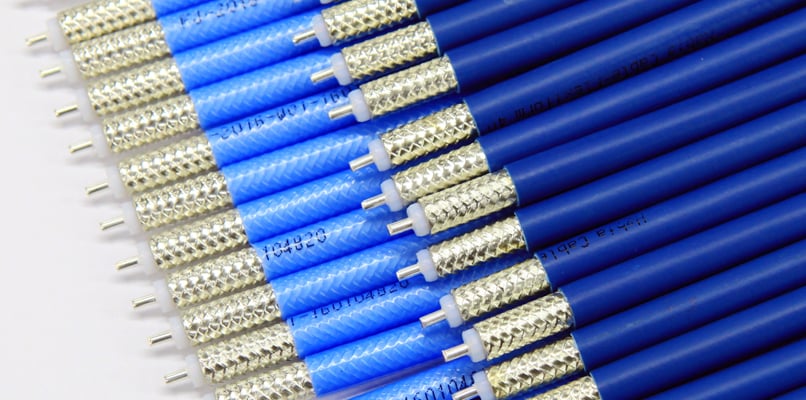Reformable coaxial cables
Operating at frequencies up to 18 GHz, where high performance and flexibility are required, our Flexiform™ is the ideal solution.
Habia was founded in 1941 as a manufacturer of components in the polymer of the day – Bakelite. Thanks to the foresight of our founder, Carl Herbert Jacobsson, Habia was one of the first companies in Europe to make use of Polytetrafluoroethylene - PTFE, and also one of the first to manufacture PTFE wires and cables as early as 1957, only four years after DuPont introduced the material on the market.

Our long history with this fantastic plastic has given us unrivalled knowledge when it comes to both manufacturing and using PTFE as insulation in cables for extreme conditions.
This material has outstanding electrical and chemical properties and can easily withstand high temperatures for long periods of time (up to 260 degrees Celsius for more than 20,000 hours for example). It's resistant to almost all known chemicals and has extremely good insulation properties. It withstands high voltage, allowing for thinner insulations and can be used at higher frequencies over longer distances without losing signal due to its low dielectric loss. It won't catch fire and it does not age. Hard to believe but true. PTFE's properties are an effect of the magic chemistry of carbon-fluorine bonds, like all fluorocarbons of course, but in this case the bonds really do a great job.
We use PTFE for coaxial cables for high frequency and high temperatures. It is also very useful for power transfer in conditions where thin insulation, high temperature or high chemical resistance is needed. Flexiform – the product range of cables for the telecom industry uses PTFE as insulation, which is a big factor for its trustworthiness and longevity.
Needless to say, we use a host of different plastics, some of whom have similar properties as PTFE. But given the complicated production process, PTFE is more expensive and is reserved for the most extreme solutions. When nothing else can do the job.
PTFE is perhaps best known under the trademark Teflon which has become synonymous with non-stick pans and is still used for pans seventy years after it was first introduced. Gore-Tex also uses PTFE in its membrane to create the comfort of breathable, waterproof fabric. The material has too many applications to list here but we are happy to know PTFE inside and out for our purposes. Thanks to our founder, we have had more than 70 years' experience in using PTFE in cables.
PTFE was discovered by chance in a lab in the United States when a chemist left a bottle of Tetrafluoroethylene gas (TFE) over night in a refrigerator and was unable to get anything out of it. When sawing the bottle in two he discovered a new substance that stuck to the insides. The properties of PTFE turned out to be both strange and very useful. It became known as Teflon and is the one of the most non-stick materials in the world. The non-stick property makes it quite a challenge to use in manfacturing. The process involved is cold-extrusion at high pressure followed by sintering at high temperature. Don't try it at home …